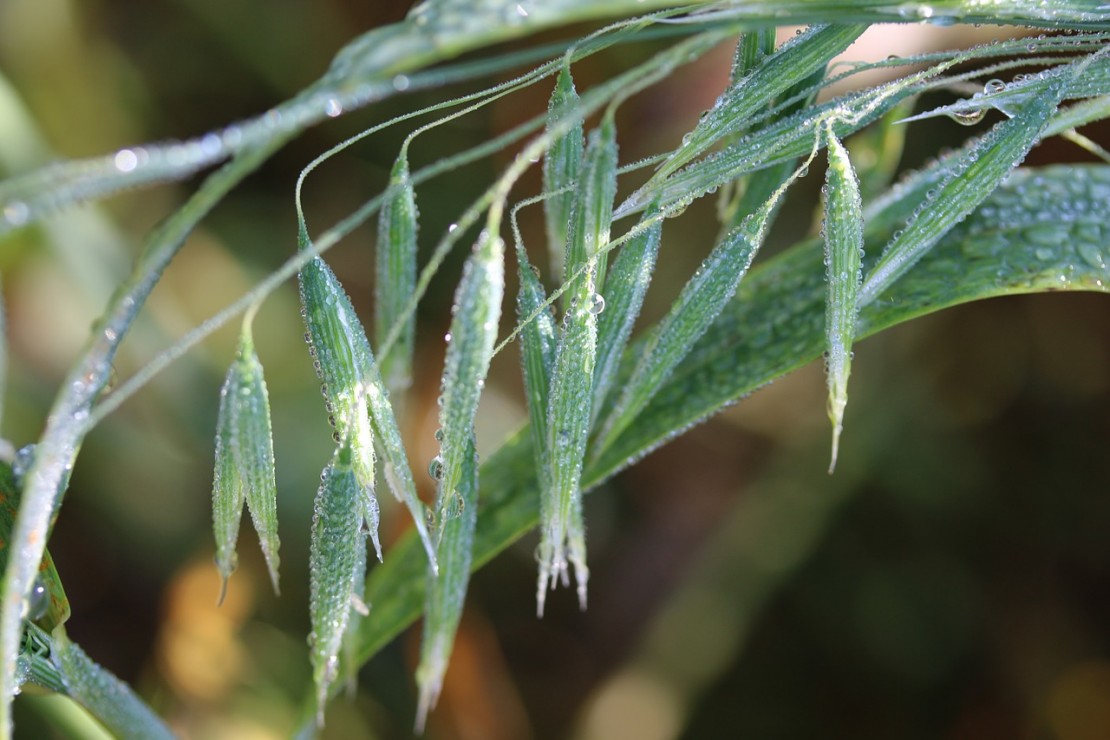
How To Have A Sensational Experience With Oatstraw
by Rebecca Swartwood
Salty, sweet, milky, feminine, watery, strengthening, silky, easy… These were my initial impressions after drinking my first cup of oatstraw infusion.
It was soothingly thick, almost chewable in my mouth, coating throat and stomach with its healing liquid. As I sat with the tea, I felt strengthened deep into my core, the sustaining drink working its way through muscle and bone, and delving deeper into nerves and energetics.
I loved oatstraw from the first sip, and continue to drink it a few times each week.
In the summer months, I often drink it daily, relying on its cooling qualities to keep me refreshed when heat and humidity are on the rise. Herbalist Deb Soule especially recommends oatstraw in late summer, the midway point between Summer Solstice and Autumn Equinox. She writes that “late summer is the time to fully take in and assimilate all the experiences we have tended and nurtured since spring” (Soule, 2013, p. 105).

Oats
Oats also go by the name Avena sativa, sativa meaning cultivated. This cultivation indicates that this special plant has had a long history of use and appreciation as a food source.
In ancient mythology, the original Earth Goddess, Gaia, was fed from the milk from milky oats as an infant. It really is a food to grow goddesses, and healthy mortals, too.
Experience The Calming Effects of Oatstraw
Classified by phytotherapist David Hoffman as a nervine tonic, antidepressant, nutritive, demulcent and vulnerary, this plant is soothing and nourishing on many levels (Hoffmann, 2003, p. 532).
As a nervine, oats are used to deeply relax and re-building to the nerves. I often use oatstraw when I want to focus on replenishing and feed my nervous system, and I feel how my nerves go from jumpy and jagged to soft and smooth when I drink it regularly. Herbalist Robin Rose Bennett considers oats to be adaptogenic, explaining that they “will alter how you respond to stress in the short and long term… and help to improve synaptic functioning and communication between nerve cells” (Bennett, 2014, p. 195). Try taking 2-4 cups of oatstraw infusion every day for a week, and see if you feel its soothing and tonifying effects.
Sensational Qualities of Oatstraw
Oatstraw infusion has a lovely liquid thickness, applying its gentle balm of vitamin E, minerals, B vitamins and proteins to our intestines and mucous membranes as it travels through the body. Its thickness is a clear indication of its demulcent qualities and is helpful in moistening the eyes, mouth, throat, and vagina. Deb Soule recommends that women use the fresh tinctured oat tops “orally on a daily basis over several months for moistening and lubricating dry, irritated or inflamed vaginal tissue” (Soule, 2013, p. 208). I also find that oatstraw helps me stay hydrated during the heatwaves of summer. It doesn’t hurt that the infusion is so pleasant to drink, making its benefits that much sweeter.

You Too Can Have A Sensational Experience With Oatstraw
Oatstraw is a special plant ally of mine, taking me on journeys to the cold wintry shores of half-remembered foggy isles, and deep into water and earth elements. I feel its watery femininity in its barely salty flavor as if it has got a spoonful of sea water mixed in. And its grounding earthiness, too, in the way it fills me up and burns slow, keeping hunger at bay for hours. I feel it feeding my body and fluidly finding my points of tension, and gently untwisting them.
Oats can feel familiar, and also sacred and special. I hope you’ll seek out this sweet plant, and see for yourself the many ways oatstraw soothes and strengthens body and spirit.
Tell us about your experiences with oatstraw in the comment section below!
REFERENCES
Bennett, Robin Rose. The Gift of Healing Herbs. (2014). Berkeley, CA: North Atlantic Books.
Hoffmann, David. Medical Herbalism. (2003). Rochester, VT: Healing Arts Press.
Soule, Deb. How To Move Like A Gardener. (2013). Rockport, ME: Under the Willow Press.







